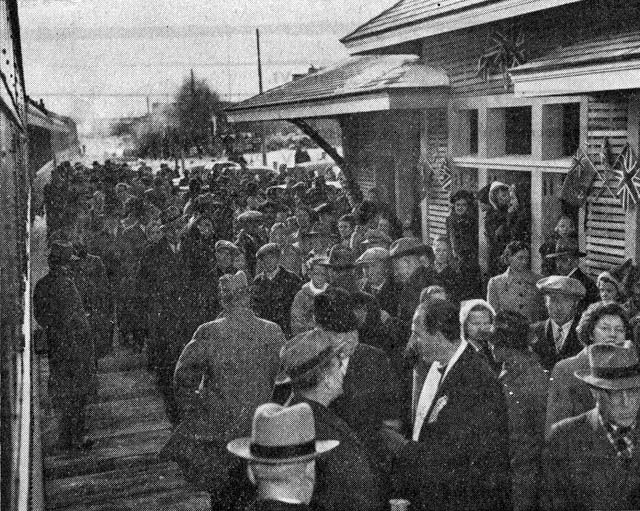
Canadian Pacific Staff Bulletin - 1945

Osoyoos produces the earliest fruit in Canada. It is a semi-tropical valley in southern British Columbia where cantaloupe flourish, zuka melon grow to a weight of 130 pounds, and other rich crops include cherries, apricots, peaches, pears, plums, apples, grapes, tomatoes, and melons.
Twenty-five years ago it was arid range land, rich only in cactus and sagebrush and Mexican greasewood.
At that time, the late Premier John Oliver, of British Columbia, envisioned a gigantic irrigation scheme coupled with a plan for soldier settlement. His government planned to spend three or four millions of dollars to pipe water from Okanagan Lake and they secured the promise of the Canadian Pacific to extend rail facilities as the district's growth warranted.
Now the-district has come of age. John Oliver's dream has materialized.

The whole Okanagan Valley shipped about 14,000 freight cars of fruit in the past year. The relatively tiny Osoyoos district provided about 250 of those cars, 70 of them being cars of cantaloupes. Shipments included 5,278 tons of fruit and 3,520 tons of vegetables. There are 1,800 acres under cultivation with many trees still too young to bear fruit. An additional 1,500 acres of irrigable land are easily available.
Statistics like those lend strength to claims that, within 10 years, Osoyoos will be the richest orchard district in Canada.
The celebration marking the coming of the Canadian Pacific to this town of 1,200 in the sunniest and southernmost part of the famous Okanagan Valley, was heart warming.
A special passenger train from Penticton, 35 miles northward, carried guests from all the fruit districts of the valley. High rail officials, government representatives, Boards of Trade presidents from as far as Vancouver, visitors from the United States two and a half miles to the south, all took part in this most important event in the history of Osoyoos.
The strains of a high school brass band and the cheers of practically every resident of the district welcomed the first train into the uncompleted station, and it was on time to the second.
Ceremonies at the station were brief. Tall, energetic, Rev. Father A. Muelenbergh, Catholic priest, president of the Osoyoos Board of Trade, and evidently mainspring of public activity in the town, welcomed about 100 visitors and led them to the community hall where cocktails, dinner, and speeches followed in rapid succession.
Then the last spike was driven in a series of careful taps by George Fraser, pioneer resident and president of the Osoyoos Co-operative Growers' Association. Residents of Osoyoos returned to the* station to wave a polite good-bye to their guests departing on the first train, and then continued with a celebration which gave every promise of being one of the most spontaneously enthusiastic seen in recent years in inland British Columbia.
(Continued on page 15)
Unfortunately, the article must end here as the remaining pages were not found.
 and is reprinted here with their permission. All photographs,
logos, and trademarks are the property of the Canadian Pacific Railway Company.
and is reprinted here with their permission. All photographs,
logos, and trademarks are the property of the Canadian Pacific Railway Company.